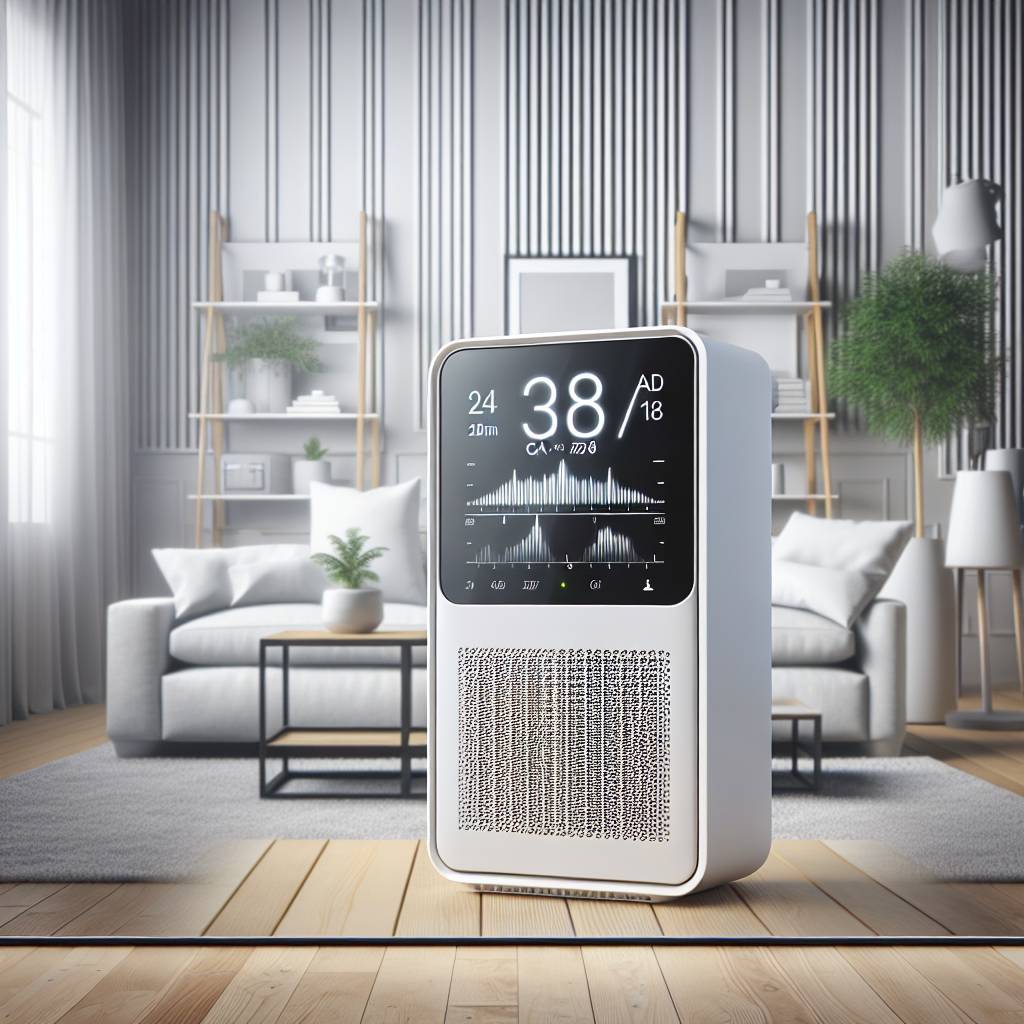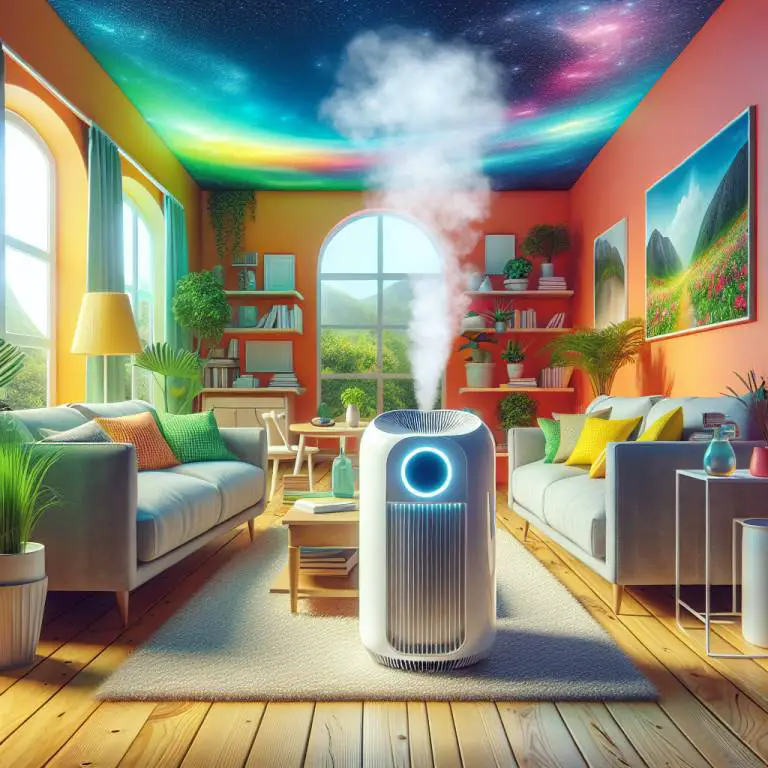Understanding The Role Of Cadr In Asthma Relief
The Clean Air Delivery Rate (CADR) plays a crucial role in choosing an air purifier for asthma relief. It measures how well an air purifier can remove dust, pollen, and smoke from the air, which are common triggers for asthma attacks. A higher CADR rating means the purifier is more effective at cleaning the air, making it important for people with asthma to look for a high CADR rating when selecting an air purifier.

How does CADR affect asthma relief?
CADR, or Clean Air Delivery Rate, is a measure of how well an air purifier can clean the air of specific pollutants. For people with asthma, this is crucial because it directly impacts how many asthma triggers are removed from the environment. A higher CADR means more particles like dust, pollen, and smoke are filtered out quickly.
This rapid removal of irritants from the air can significantly reduce asthma symptoms for sufferers. When the air in a room is cleaner, individuals with asthma breathe easier, experience fewer respiratory issues, and generally feel better. Thus, selecting an air purifier with a high CADR rating can be beneficial for those looking to alleviate asthma symptoms.
What factors should be considered when looking at CADR for asthma sufferers?
When evaluating CADR for its impact on asthma relief, it’s important to consider the size of the room where the air purifier will be used. The effectiveness of an air purifier’s CADR decreases as room size increases. Therefore, choosing a device with a CADR rating appropriate for your space ensures optimal performance and symptom relief.
Another factor to consider is the types of pollutants you’re most concerned about. Different air purifiers have varying efficiencies when it comes to filtering out specific allergens like pet dander, pollen, or smoke. Asthma sufferers should look for an air purifier that has a high CADR rating against their primary triggers to ensure they’re getting the most benefit.
Need relief from asthma at home? Learn how our favorite air purifier for asthma can transform your living space into a cleaner, healthier environment. Get the full scoop here.
How do different types of air purifiers compare in terms of CADR?
Different types of air purifiers use various technologies to clean the air, which affects their CADR ratings. HEPA (High-Efficiency Particulate Air) filters are known for their ability to trap fine particles effectively and typically have high CADR ratings. This makes them particularly suitable for removing common asthma triggers from indoor environments.
On the other hand, ionizers and UV light purifiers might not have as high CADR ratings because these technologies work differently and may not physically remove particles from the air at the same rate as HEPA filters do. It’s essential for asthma sufferers to compare these types based on their specific needs and choose one that offers adequate filtration performance.
Can high CADR air purifiers remove asthma triggers effectively?
Air purifiers with high CADR ratings are designed to filter out large volumes of air quickly, making them highly effective at removing airborne particles that can trigger asthma symptoms. These devices can significantly reduce levels of dust mites, pet dander, pollen, and even smoke in your home environment.
The efficiency at which these triggers are removed contributes greatly to creating a healthier breathing space for individuals with asthma. By maintaining cleaner indoor air through continuous use of a high-CADR-rated air purifier, people suffering from asthma can experience fewer symptoms and enjoy improved overall respiratory health.
| Feature | Description | Importance for Asthma Relief |
|---|---|---|
| CADR (Clean Air Delivery Rate) | Measurement of the volume of filtered air delivered by an air purifier, in cubic feet per minute (CFM). | Higher CADR indicates more efficient removal of asthma triggers like dust, pollen, and smoke from the air. |
| Particle Size Efficiency | Ability of the air purifier to remove specific sizes of particles, including small particles that can trigger asthma symptoms. | Effective removal of smaller particles (<2.5 micrometers) is crucial for protecting against asthma triggers. |
| HEPA Filter | High-Efficiency Particulate Air filter capable of removing at least 99.97% of dust, pollen, mold, bacteria, and airborne particles with a size of 0.3 microns. | Essential for capturing fine particles that can exacerbate asthma, ensuring cleaner breathing air. |
| Activated Carbon Filter | Filter designed to adsorb gases and odors from the air, including volatile organic compounds (VOCs) and other chemicals. | Helps in reducing exposure to chemical triggers and odors that can lead to asthma flare-ups. |
| Air Change Per Hour (ACH) | Rate at which the air purifier can exchange the air within a room, indicated by the number of times the air is replaced per hour. | Higher ACH rates ensure more frequent cleaning of air, reducing the concentration of asthma triggers in the environment. |
What are the limitations of CADR in assessing air purifier effectiveness for asthma?
CADR, or Clean Air Delivery Rate, is a key metric used to evaluate the efficiency of air purifiers. However, it doesn’t tell the whole story, especially for those with asthma. One limitation is that CADR primarily measures the removal of dust, pollen, and smoke particles. It doesn’t account for the elimination of gases or odors, which can also trigger asthma symptoms.
Moreover, CADR ratings do not reflect an air purifier’s effectiveness against microorganisms such as viruses or bacteria. For individuals with asthma, exposure to these airborne pathogens can exacerbate their condition. Therefore, relying solely on CADR might not provide a complete picture of an air purifier’s ability to create a healthier indoor environment for asthma sufferers.
How often should you use an air purifier with a high CADR for optimal asthma relief?
To achieve optimal asthma relief, using an air purifier with a high CADR rating consistently is crucial. Running the air purifier continuously ensures that your indoor air remains as clean as possible. For individuals with asthma, this continuous operation helps minimize exposure to potential triggers present in the indoor environment.
It’s recommended to keep the air purifier on 24/7 if possible or at least during times when you’re most likely to be in the room. Remember that doors and windows being opened can introduce new contaminants into your space, so adjusting usage times based on these factors can also be beneficial for maintaining cleaner indoor air.
Are there specific brands or models of air purifiers recommended for people with asthma based on their CADR?
While there isn’t a one-size-fits-all answer regarding specific brands or models best suited for individuals with asthma, looking for air purifiers with higher CADR ratings in dust, pollen, and smoke removal is advisable. Brands like Honeywell and Blueair often receive positive reviews from users with respiratory issues due to their efficient filtration systems capable of capturing fine particles that could trigger asthma symptoms.
Besides considering CADR ratings, it’s also important to look for features such as HEPA filters known for trapping microscopic allergens effectively. Some models come equipped with additional filtration layers designed to tackle gases and odors—factors contributing to indoor air quality but not directly measured by CADR. Consulting healthcare providers or experts in respiratory health can also guide selecting an appropriate air purifier model.
Final Thoughts
In conclusion, while CADR is a valuable metric in assessing an air purifier’s capability to remove certain particles from the air, it has its limitations—especially concerning its relevance for individuals suffering from asthma. It does not measure all pollutants that may affect respiratory health nor does it account for microbial contaminants.
To ensure optimal relief from asthma symptoms through improved indoor air quality, consider running an efficient high-CADR-rated air purifier continuously while paying attention to other features like HEPA filtration and capabilities against gases and odors. Ultimately, choosing the right model involves balancing between technical specifications like CADR and practical considerations tailored to individual health needs.






